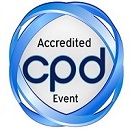
Muhammad Riaz
Sejong University, Seoul-South Korea
Title: Effective utilization of microbial cells for decontamination of Aflatoxin M1 in milk
Biography
Biography: Muhammad Riaz
Abstract
Aflatoxin M1 (AFM1) is one of the category 1 carcinogenic compound found in milk. AFM1 is usually found in milk from animals fed on aflatoxin B1 (AFB1) contaminated fodder. AFB1 is converted in AFM1 in liver and get absorbed into the milk during biosynthesis. AFM1 is considered as one of the potential human carcinogen, cytotoxin, teratogenic and genotoxic agent. Various strategies including, microwave heating, pasteurization, sterilization, binding with clay and microbial cells have been adopted to degrade, decontaminate and removal of this toxic compound from milk. However, decontamination of AFM1 by binding it with microbial cell culture and then removal by centrifugation is considered as the most effective. In the current study three strains of lactic acid bacteria, a yeast strain of Saccharomyces cereveisae and a mixture of both were used to evaluate their binding potentials for AFM1. Two different concentrations of AFM1 0.05 and 0.1 µg/l were spiked in milk samples in the presence of various concentrations and their combinations of microbial cells. The concentration of AFM1 and microbes were found to significantly affect the binding potentials of microbes. Saccharomyces cereveisae, lactobacillus helveticus and the mixture of microbes at the concentration of 1010 cfu/ml were found to be most effective for binding of AFM1. The stability of the AFM1-microbial-cell complex revealed safe usage of microbes for the reduction of AFM1 levels up to harmless limits.

